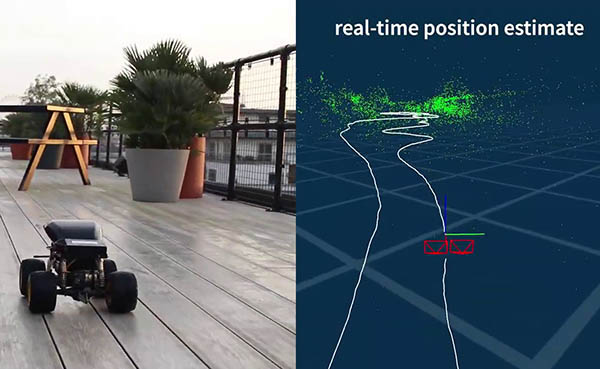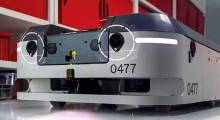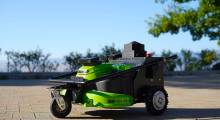Affordable and reliable robot navigation is essential for a widening range of applications. SLAMcore Ltd. today announced that it has raised $16 million in Series A funding. The London-based company said it plans to use the financing to “rapidly capitalize” on its technology, which combines artificial intelligence with consumer-grade cameras, sensors, and processors. Its vision-based location and mapping is designed for robots, autonomous machines such as drones, and consumer electronics.
“For far too long, robots have not been able to navigate physical spaces with the level of accuracy and efficiency that we know is possible,” stated Owen Nicholson, founder and CEO of SLAMcore. “As they become more available to companies and consumers alike in years to come, SLAMcore is determined to ensure that as many designers as possible have access to the algorithms needed to optimize their products.”
“We provide accurate, robust, and commercially viable SLAM [simultaneous localization and mapping] using affordable cameras and components that will benefit wide swathes of businesses and improve the user experience of consumer products,” he added.
“We've been working on the technology for four years, and it has been on the commercial market for the past year,” Nicholson told Robotics 24/7. “Over 100 customers use the SDK [software development kit], and most are in POC [proof of concept].”
SLAMcore helps robots 'read the room'
SLAMcore said it uses deep learning to help devices identify physical space, objects, and people around them in order to autonomously navigate in a safer and more efficient way. The company's algorithms allow robots, from domestic vacuum cleaners to precision industrial autonomous vehicles, to precisely map their environments and locate themselves accurately within those maps.
Produers of virtual reality and augmented reality (VR and AR) headsets also use the technology to accurately align virtual and physical worlds, said Nicholson.
Major technology companies such as Meta (producer of Facebook) have already used SLAMcore's technology. “With the market for autonomous and spatially aware machines predicted to exceed $100 billion by 2030, the opportunities for the business’ software are immense,” said SLAMcore.
Increasing interest in the “metaverse” will further grow the market for wearable and attachable devices that allow humans and machines to map and safely navigate real and virtual worlds simultaneously, it said.
Democratizing robotics design
SLAMcore said one of its goals is to democratize robotic technology by making SLAM more accessible for robotics designers. SLAM is one of the trickiest elements in creating machines, and devices that can autonomously navigate and can take months of development time and thousands of dollars in sensors and processors to get right, according to the company.
In addition, SLAMcore claimed that its algorithms allow any designer to use a simple hardware setup of two low-cost cameras and an inertial measurement unit (IMU) to deliver SLAM functionality “out of the box.” As a result, more designers can bring autonomous systems to market faster and more cost- effectively, it said.
“With our preconfigured algorithms, an Intel RealSense camera, and an NVIDIA embedded processor, robotics developers can be up and doing SLAM in minutes,” Nicholson said. “They can move from POC to actually embedding it at scale.”
“Our technology has already been proven in commercial pilots and proofs of concept with customers as diverse as Meta, which uses SLAMcore in its cutting-edge Bombyx robot, to Synaos, which uses it to retrofit autonomous location and mapping capabilities to intralogistics vehicles,” he said.
“This funding will allow us to rapidly scale to meet the demand from consumer electronics, logistics, industrial, and manufacturing sector clients all keen to deploy low-cost, high-accuracy SLAM at commercial scale,” said Nicholson.
Investors
ROBO Global Ventures and Presidio Ventures led SLAMcore's Series A round. Other investors included Amadeus Capital, Global Brain, IP Group, MMC, and Octopus. Strategic investors Samsung Ventures, Toyota Ventures, and Yamato Holdings also joined the round.
“The robotics market is exploding,” said Lisa Chai, a partner at ROBO Global Ventures. “Vision-based spatial intelligence is a key enabler that will turbo-charge this industry.”
Kuni Kawase, managing director of Presidio Ventures, added: “SLAMcore’s technology can be deployed to add value and reduce time to market for robots in a wide range of sectors. ... We aim to create value for the company through the extensive network of Sumitomo Corp. group companies and business partners.”
“We're looking at two key markets: the core AMR [autonomous mobile robot] market in logistics, warehouses, and domestic settings,” Nicholson said. “SLAMcore also provides the on ramp to the emerging metaverse and AR/VR wearables.”
“It's also an enabler for mobile manipulation,” he noted. “Developers can switch the SLAMcore module in for ROS [the Robot Operating System], since it's optimized out of the box for taking in multiple feeds. As use cases change, a multi-purpose robot could still run SLAM because it's configurable, so you don't have to redo it.”
About the Author
Follow Robotics 24/7 on Linkedin
Article topics
Email Sign Up
















